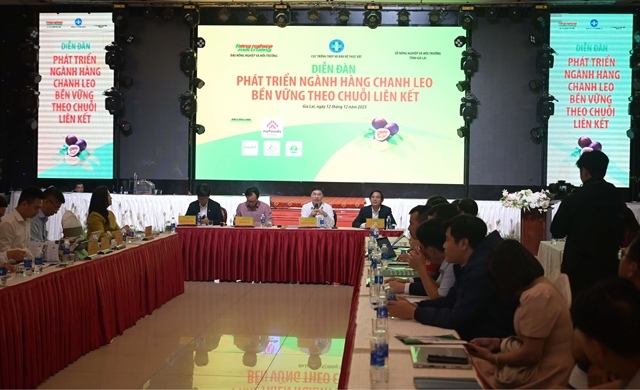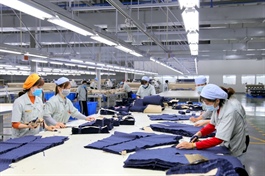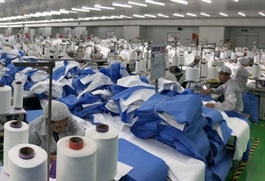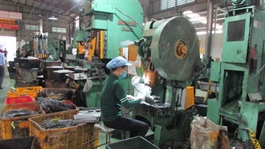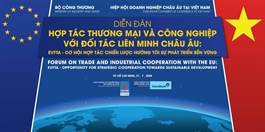Hoa Sen move hinders Ca Na progress
Hoa Sen move hinders Ca Na progress
Hoa Sen Group is looking to transfer its involvement in the $10 billion Ca Na steel complex project in the south-central province of Ninh Thuan, posing new questions as to who could take over the troublesome venture.
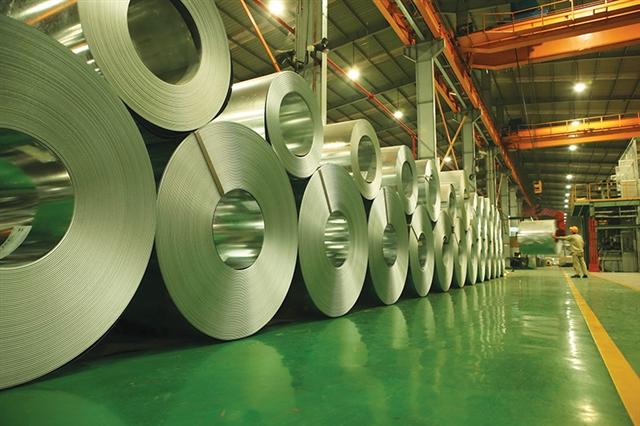
With the Ca Na project, Hoa Sen originally planned to overtake its competitors and become the largest steel producer, Photo Le Toan
|
The group wants to sell two of the six companies involved with the steel complex venture, citing a now-incompatible plan and new wishes to focus on other fields such as plastic and corrugated iron. The remaining businesses would be dissolved.
In 2016, the group established the subsidiaries with the total investment capital of VND250 billion ($11.23 million) to support implementation of the Ca Na project. At that time, thanks to a favourable steel sheet market and production capacity, Hoa Sen recorded revenues of VND18 trillion ($782.6 million), while profits eventually tripled to reach VND1.5 trillion ($65.2 million), making it the number one group in galvanised steel market share.
The company’s shares also doubled, leading to chairman Le Phuoc Vu entering the list of top 15 richest people in Vietnam. With great successes, Hoa Sen considered expanding production to continue its ambition to dominate the Vietnamese steel sheet market and compete with rival Hoa Phat Group.
The complex was planned to help Hoa Sen overtake Hoa Phat as the largest Vietnamese steel producer, following only Taiwanese Hung Nghiep Formosa Ha Tinh Steel Co., Ltd., which has an annual capacity of 7.5 million of tonnes in its first phase.
The Ca Na complex is set to be carried out towards 2031 in multiple stages and will have final capacity of 16 million tonnes a year, including long steel and flat steel.
The project was initially licensed in 2008 with investment of Malaysia’s Lion Group and Vietnam’s notorious Vinashin which is now Shipbuilding Industry Corporation, with the scheme becoming the biggest foreign-invested project ever licensed in the country at the time. The project started construction that year – however, due to financial difficulties the progress was slow and Lion Group withdrew, leading to long delays.
Consequently, in 2011 Ninh Thuan authorities revoked the project’s investment certificate before Hoa Sen took over.
According to mergers and acquisitions analysts, even before the current pandemic situation, along with the long and complicated trade war between major economies, Vietnam’s steel market was becoming heavily affected, causing damage to export and import activities. The domestic demand decreased in the context of real estate projects having difficulty.
“In the context of the real estate segment gradually peaking due to oversupply, along with credit tightening policies and the continuing pandemic, investing in a steel project will not be feasible,” one industry insider remarked, adding that it was also not easy to find international investors to acquire projects in the first place.
Meanwhile, the Ca Na initiative itself has previously faced mixed opinions concerning environmental issues due to heightened possibility of a disaster similar to the one caused by Hung Nghiep Formosa Ha Tinh some years ago. Thus there have been calls for clarification on planning issues, environmental plans, monitoring responsibilities, and other areas of transparency.
In 2017, the prime minister requested the suspension of the Ca Na project in order to “clarify some issues related to the environment and technology.” He said that there would not be a trade-off between the project and the environment.
Shareholders are expecting that the upcoming extraordinary general meeting this month will answer questions on who could take over the project and the additional plans for Hoa Sen in the coming time.






